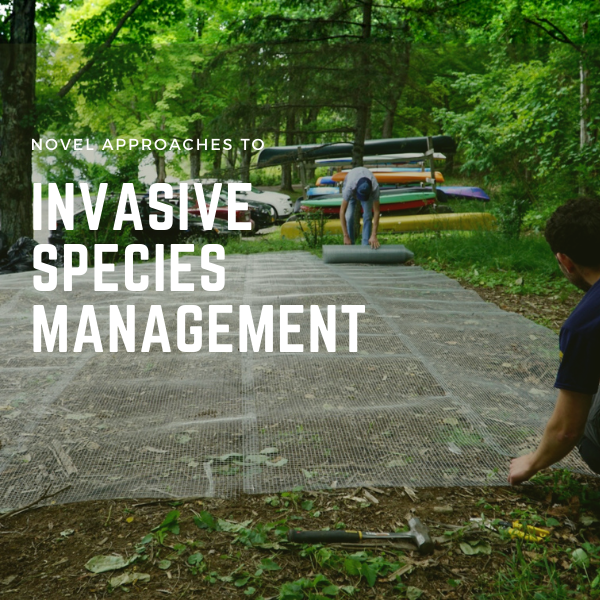This article was featured in the 2022 Spring Newsletter by Garrett Chisholm-Huyck Preserve.
Now in its fourth year, invasive species management at the Huyck Preserve located in Rensselaerville is more visible than ever. Walking our twelve miles of trails, across over 2,000 acres of land, one might come across autumn olive that has been solarized with black plastic, a fairly standard treatment for this species. One might, though, also see a singed multiflora rose, all that remains from a recent flame treatment. This more novel approach to invasive species management uses a weed torch on resprouts of multiflora, Japanese barberry, and autumn olive. But, our most visible management effort might be the hardware cloth being used as an experimental technique to manage Japanese knotweed, an invasive species similar to bamboo that spreads through fragments and underground rhizomes.
This experimental management is thanks to funding provided by the Capital Region PRISM through their RFP program. Before 2021, management of knotweed involved cutting back above-ground biomass and repeatedly hand pulling its resprouts, with the overall goal being suppression. With this new technique, we are hoping to see the knotweed girdle itself as it grows through the half-inch x half-inch galvanized steel mesh, reducing both the quantity of annual resprouts and the time that staff spends working on its management.
At the beginning of the study, all above-ground biomass in the experimental knotweed plot was removed, and the hardware cloth was rolled out and secured to cover the area. Meanwhile, the adjacent control plot was managed as normal and no hardware cloth was installed. Four study plots were created in both the experimental and control plots and, after 30 days, we returned to count the number of stems and measure the height of each stem in the plots.
Initial results showed that there were more stems but shorter individuals in the experimental treatment compared to the control. Notably, neither population flowered. More information will need to be gathered through future monitoring, but this response may be a reaction to stress caused by the hardware cloth. This is a multi-year study, and we look forward to sharing these findings across the larger PRISM network.
To learn more about the experimental invasive species management techniques being used at the Huyck Preserve, contact the Stewardship Coordinator Garrett Chisholm at, garrett@huyckpreserve.org.


